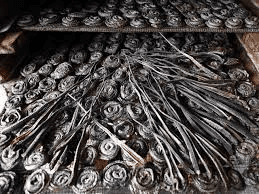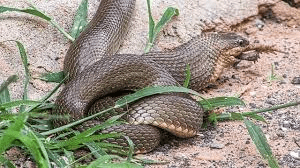Snake farming is a specialized practice that involves breeding, raising, and caring for snakes, often for commercial purposes. This can include producing snake venom, breeding for pets, or harvesting skins. It’s an intricate process that requires knowledge, planning, and attention to detail.
This guide will walk you through the basics of snake farming, from choosing the right species to setting up and managing your farm.
Choosing the Right Snake Species
1. Determine Your Goals: The first step in choosing a snake species is to decide what you want to achieve with your farm. Are you interested in producing venom, selling snakes as pets, or harvesting skins? Different species serve different purposes.
2. Research Species: Investigate various snake species to understand their needs, behavior, and market value. Some commonly farmed species include:
i. Ball Pythons: Popular in the pet trade for their docile nature and variety of color morphs.
ii. King Cobras: Valued for their venom, but require more advanced care.
ii. Boa Constrictors: Known for their size and strength, often farmed for their skins.
3. Consider Climate and Space: Different snakes have different habitat needs. Choose a species that fits well with your local climate and the space you have available for farming.
4. Check Regulations: Ensure that farming the species you choose complies with local wildlife and agriculture regulations. Some species might require special permits.
Read Also: Rose Chafer: Description, Damages Caused, Control and Preventive Measures
Setting Up a Snake Farm

1. Choose a Location: Select a location that provides the necessary space and meets the needs of the snake species you plan to farm. Ensure it’s secure, well-ventilated, and accessible.
2. Prepare the Infrastructure: Set up essential infrastructure, including:
i. Enclosures: Secure and appropriately sized enclosures for housing the snakes.
ii. Heating and Cooling Systems: Equipment to maintain the required temperature and humidity levels.
iii. Water Supply: Reliable sources of clean water for drinking and humidity.
3. Implement Security Measures: Snakes can be escape artists, so ensure that enclosures are secure and that there is a system in place to prevent unauthorized access.
4. Plan for Waste Management: Establish a system for managing waste from the snakes and maintaining cleanliness in the enclosures.
Habitat and Enclosure Design
1. Design Appropriate Enclosures: Enclosures should mimic the natural habitat of the snake species you are farming. Key elements include:
i. Size: Ensure the enclosure is spacious enough for the snake to move comfortably.
ii. Substrate: Use substrates like aspen bedding or newspaper, depending on the species’ needs.
iii. Hides: Provide hiding places to reduce stress and allow the snakes to feel secure.
iv. Climbing Structures: For arboreal species, include branches or other climbing structures.
2. Maintain Temperature and Humidity: Each snake species has specific temperature and humidity requirements. Use thermostats and humidifiers to maintain these conditions. Regularly monitor and adjust as needed.
3. Provide Fresh Water: Ensure that each enclosure has a clean water source. Regularly change the water to prevent contamination.
4. Clean and Sanitize: Regularly clean and sanitize enclosures to prevent the buildup of bacteria and parasites. This includes removing waste and cleaning water bowls and substrates.
Read Also: Bedbugs: Description, Damages Caused, Control and Preventive Measures
Feeding and Nutrition

1. Understand Dietary Needs: Different snake species have different dietary requirements. Some may eat live prey, while others may eat pre-killed or frozen food. Common food items include:
i. Rodents: Mice and rats are common prey for many species.
ii. Birds: Some larger snakes may eat birds.
iii. Other Reptiles: Certain species may require other reptiles in their diet.
2. Create a Feeding Schedule: Develop a feeding schedule based on the snake species’ growth stage and dietary needs. Younger snakes typically eat more frequently than adults.
3. Monitor Health: Observe the snakes during feeding to ensure they are eating properly and show no signs of illness. Adjust the diet if necessary.
4. Avoid Overfeeding: Ensure that snakes are fed an appropriate amount. Overfeeding can lead to obesity and other health issues.
Breeding and Reproduction
1. Understand Breeding Requirements: Research the specific breeding needs of the snake species you are farming. This includes understanding their mating behaviors, habitat conditions, and timing.
2. Prepare Breeding Enclosures: Set up separate breeding enclosures with appropriate temperature, humidity, and nesting sites. Female snakes may require a specific environment to lay eggs.
3. Monitor Mating Behavior: Observe the snakes during the mating season. Ensure that both male and female snakes are healthy and show signs of readiness to breed.
4. Care for Eggs or Young: If breeding is successful, care for the eggs or young snakes. This includes maintaining the right temperature and humidity for incubation and providing appropriate food once they hatch.
5. Handle Hatchlings Properly: After hatching, handle young snakes gently and provide them with the necessary care and nutrition to ensure their growth and development.
Introduction to Snake Farming
Snake farming is a specialized practice that involves breeding, raising, and caring for snakes, often for commercial purposes. This can include producing snake venom, breeding for pets, or harvesting skins. It’s an intricate process that requires knowledge, planning, and attention to detail. This guide will walk you through the basics of snake farming, from choosing the right species to setting up and managing your farm.
Health and Disease Management
1. Monitor Health Regularly: Regularly check the health of your snakes for signs of illness or distress. Common issues include respiratory infections, mites, and skin problems.
2. Maintain Cleanliness: Keep enclosures clean and hygienic to prevent disease outbreaks. Regularly disinfect enclosures and replace soiled substrates.
3. Consult a Veterinarian: Work with a veterinarian who specializes in reptiles to handle health issues and perform regular check-ups. They can provide guidance on treatments and preventive care.
4. Quarantine New Snakes: Before introducing new snakes to your farm, quarantine them for a period to ensure they are not carrying diseases that could spread to your existing stock.
Handling and Safety
1. Learn Proper Handling Techniques: Understand the correct methods for handling snakes to minimize stress and prevent injury. Always support the snake’s body and avoid sudden movements.
2. Use Protective Gear: Wear appropriate protective gear, such as gloves, when handling venomous or large snakes to ensure your safety.
3. Train Staff: Ensure that everyone involved in the farm is trained in proper handling techniques and understands the safety protocols for dealing with snakes.
4. Respond to Bites Promptly: If a bite occurs, follow first aid procedures and seek medical attention immediately if necessary. Ensure that you have a clear plan for managing such incidents.
Record Keeping and Documentation
1. Maintain Accurate Records: Keep detailed records of each snake, including its species, age, health history, and breeding information. This helps in managing the farm and tracking the health and productivity of your stock.
2. Track Feeding and Health Data: Document feeding schedules, quantities, and any health issues observed. This information is valuable for diagnosing problems and managing nutrition.
3. Document Breeding Activities: Record mating dates, egg clutches, and hatchling data. This helps in planning future breeding cycles and understanding reproductive success.
4. Compliance Records: Keep records related to compliance with local regulations and permits. This ensures that your farm operates within legal boundaries and maintains good standing.
Legal and Regulatory Considerations
1. Obtain Necessary Permits: Research and obtain any required permits for snake farming, especially if you are dealing with venomous species. Compliance with local wildlife and agriculture regulations is crucial.
2. Follow Animal Welfare Laws: Ensure that your farm meets animal welfare standards. This includes providing appropriate living conditions and care for your snakes.
3. Understand Trade Regulations: If you plan to sell snakes or their products, be aware of regulations related to wildlife trade and ensure you have the necessary licenses.
4. Stay Updated on Laws: Regulations may change, so regularly review local and national laws related to snake farming to ensure ongoing compliance.
Economic Aspects of Snake Farming
1. Assess Startup Costs: Calculate the initial investment required for setting up the farm, including costs for enclosures, equipment, snakes, and permits.
2. Estimate Ongoing Expenses: Consider ongoing costs such as feeding, veterinary care, utilities, and maintenance. Budgeting for these expenses is essential for financial planning.
3. Evaluate Revenue Potential: Research potential revenue sources, including the sale of snakes, venom, and skins. Understand market demand and pricing to project income.
4. Manage Financial Risks: Develop a financial plan that includes risk management strategies. This may involve insurance and contingency plans for unexpected expenses or market fluctuations.
Conclusion
Starting and managing a snake farm involves careful planning and attention to detail. From choosing the right species and setting up appropriate enclosures to managing health and safety, every aspect is crucial to ensuring the success of your farm.
By following these guidelines, you can create a productive and profitable snake farming operation, while ensuring the well-being of your snakes and compliance with regulations.
Read Also: How to Graft an Avocado Tree to Produce Avocado Fruit

